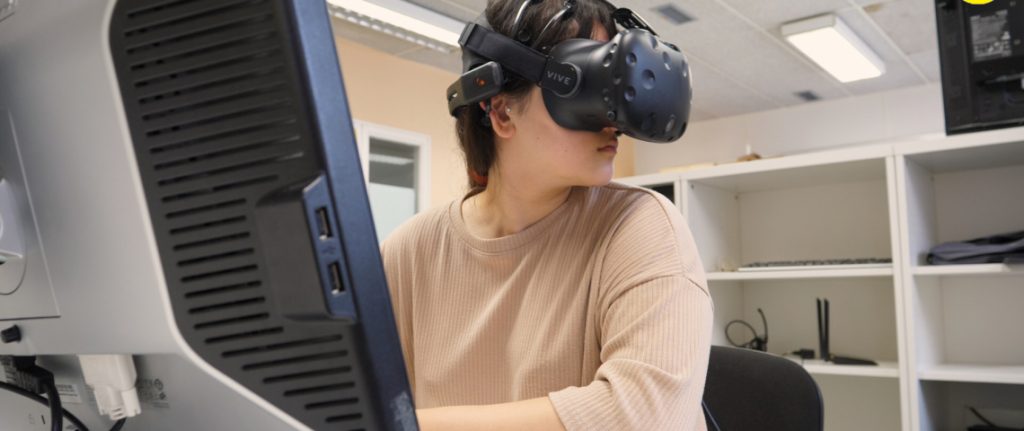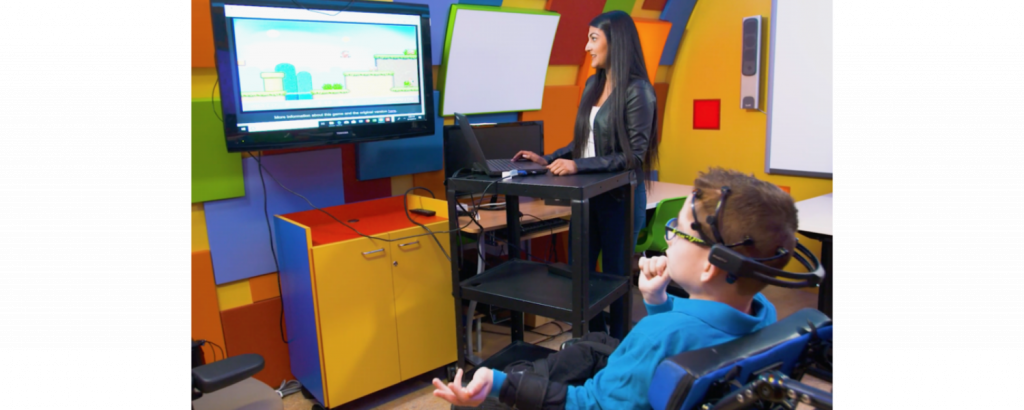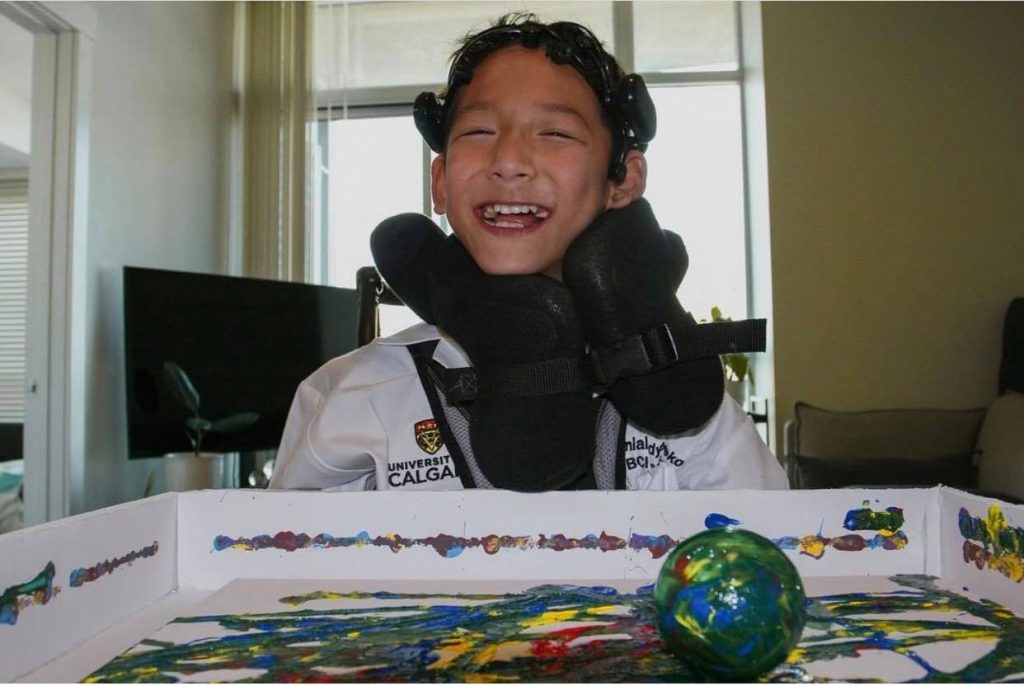EMOTIV — Developers: Unleash Your Creativity on Our Dime. Every indie developer knows that one of the biggest challenges to succeeding in the apps/games arena is finding a way to stand out amongst the millions of apps/games already available. And how do you gain attention? When over 3,000 new apps are published daily on Google Play. And over 600 a day make their debut on the Apple app store?
The answer lies in BCI-enabled apps—a futuristic approach that provides adaptive and personalized experiences and gameplay.
Here’s a bonus—the team at EMOTIV has launched a royalty-free option to help developers do it. This program gives indie developers access to our brain-computer interface (BCI) API. So you’re able to produce next-gen features that will rock the world. Here are the nitty-gritty details: Developers using the EMOTIV BCI API can now distribute their applications across the Developer Community royalty-free up to 10,000 EmotivIDs or $1 million in revenue. If you don’t reach this cap, your applications will be royalty-free forever!
So whether you want to take gaming to the next level in ways most gamers (and game developers) have yet to imagine, create innovative therapies in the healthcare field, or revolutionize smart home tech that makes the current offerings look like something from the Flintstones, EMOTIV’s BCI API tech can help you do it.
Check out how some developers are already taking advantage of using EMOTIV’s BCI API.
Let There Be Lights…and Lots of Other Cool Stuff

The Internet of Things (IoT) and smart homes offer residents the ability to switch on. Such as lights, open doors, or closed automated window shades. But those actions are more or less binary—on/off, open/close. In real life, people want endless variations in between. And this is especially important for people with disabilities as well as our aging population.

That’s what Accenture and Phillips did using EMOTIV Insight Brainwear which leverages Brain-Computer Interface (BCI), to develop software for people with ALS. When connected to a tablet and eye-tracking system, the wearable technology allowed ALS patients to use machine learning algorithms. And it also allowed EMOTIV’s neurotechnology to recognize brain patterns to control lighting, smart TVs, and more.

“This proof of concept shows the potential of wearable technology in a powerful new way. It helps people with serious diseases and mobility issues. This technology could take back some control of their lives through digital innovation,” said Paul Daugherty, Accenture’s chief technology officer. “It is another demonstration of how Accenture and Philips, collaborating with other technology innovators. And together seek a way to improve the lives of people with healthcare challenges.”
Getting Personal in the AR/VR World

When most developers think about the AR/VR environment, they think about how they can enhance buttons. Smashing them with more exciting shooting action, bigger explosions, and more fiery crashes. But EMOTIV’s BCI API can be used to create an entirely different set of infinitely cool elements. Like personalizing the AR/VR environment based on feedback from the user’s brainwaves. Or how each person is interacting with the app. Imagine creating apps that adjust colors, player levels, sounds, and other immersive elements depending on what the user is feeling or thinking at that very moment. It’s like injecting a bit of magic into your AR/VR world.
In a mind-blowing example of how BCI API can elevate the user experience, take a cue from the mind-bending Acura Mood Roads interactive driving experience that took place at the 2017 Sundance Film Festival. It can give you a peek into how you can sweeten your games and other AR/VR apps.
Equipped with an EMOTIV headset, users entered a spherical motion simulator that replicated the look and feel of the Acura NSX cockpit. Using a neurofeedback loop, the users’ brainwaves interacted with the motion sphere to create a unique road scape. Like rolling hills or steep terrain, hairpin curves or smooth highways, vibrant colors or subtle hues. All while taking in an ambient soundscape tuned to each user.

No two driving experiences were exactly alike, and each driver got the ride of their life. “Instead of us controlling the experience, the user actually controlled the experience from a sound, feeling, and visual perspective,” says Jennifer Fini, manager-new media strategy and activation at Acura. “It is a first-of-its-kind integration of these different technologies in this way.”
Think of all the ways you could rev up your own AR/VR world to let users influence the environment for a one-of-a-kind personalized experience. Developers, start your engines!
Taking Therapy Out of the Lab and Into the Real World
BCI has also paved the incredible advances in the field of therapy for people with physical or cognitive disabilities. Only a decade ago, it might have seemed like science fiction. The only trouble is that most of these important and effective cutting-edge therapeutic tools need to be used in labs or clinical offices. With EMOTIV headsets, BCI can be used in the home and in other real-life environments to increase access to innovative therapies. For example, take a look at BCI4Kids Calgary.

This team of clinicians, neuroscientists, and engineers harnesses the power of technology. They want to achieve greater independence and enhance the quality of life in people with neurological disabilities. The team at BCI4Kids Calgary has created a BCI-enabled pediatric rehabilitation program using the EMOTIV EPOC X, and let their brains paint pictures that their own hands never could. Using just their thoughts, they were able to let their creativity (and the paint) fly. Check out some of the stunning creations from John, an 8-year-old boy with cerebral palsy, at brainpaintbyjohn on Instagram.

What makes this so groundbreaking? Just ask John’s father, Kurt Soparlo. “The kids get to experience something they otherwise would not get the opportunity to do. It is new, fun, exciting, challenging, rewarding and so much more,” he says. “In terms of the real world, the possibilities are endless. To think that real-life applications could be implemented gives many of these kids hope. In most situations, independence is one thing that is lacking. With this technology and EMOTIV, that gap now has a bridge.”
Soparlo shares how profound the impact BCI has had on their son. “With the help of this technology, he is no longer ‘trapped’ in his body. This has provided a means for him to express himself. And in a way, it has opened him up to a whole new world.”

John’s dad can’t wait to see what other developers can come up with in this arena. “Kids that are bound to a wheelchair with no physical ability to control where they go could potentially be mobile just by thinking,” he says. “With advancements in smart technology, everyday tasks they would normally need assistance with are now within reach. Picture a bedroom fully equipped with this technology. The possibilities could include ‘turn on the lights’ or ‘play music’ or ‘call mom’ without lifting a finger or saying a word. It’s mind-blowing!”
These examples are barely scratching the surface of what the brilliant minds of indie developers can dream up. Are you ready to harness the power of EMOTIV’S BCI API? So you can let your creative juices flow and develop innovative, disruptive, and trailblazing apps. That could be the next big thing?
If you want to join the growing number of indie developers who have already tapped into this opportunity, fill out our EMOTIV BCI API Application Form now to get started!






